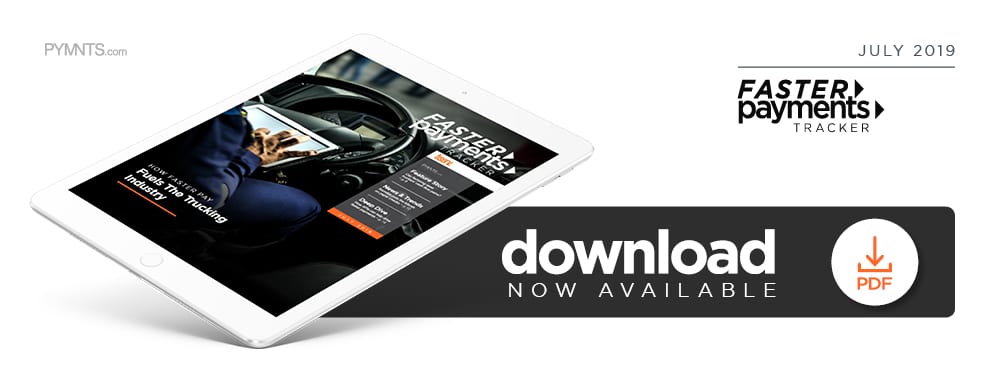Deep Dive: How APIs Can Help Drive Faster Payments
Financial players worldwide are kicking payment systems into high gear with efforts that range from easier-to-use digital solutions to new instant payment infrastructures. Roughly 40 countries had real-time payment systems in place in 2018, and many more are currently working to provide them. Such services can reduce businesses’ cash flow pains by allowing merchants to more quickly receive their revenues. In addition, they can spare tenants from fines related to late rental payments by helping them more rapidly move money into their landlords’ accounts.
Simply developing new real-time payment rails is not enough, though. Faster payments proponents must also ensure that businesses and consumers can conveniently leverage such options, and APIs can be key to enabling this access. These tools allow systems to better interact with one another, helping two parties to more securely transmit data.
Financial and government entities in countries that do not have real-time rails can also use APIs to boost payment speeds. This month’s Deep Dive explores how such solutions can support these digital transactions and provide convenient access to instant payments infrastructure, ultimately encouraging greater adoption.
Easy Consumer Access
APIs can help consumers use real-time rails to initiate payments at any time and from any location. Real-time scheme providers often offer those that facilitate related services, like allowing customers to send money via smartphones. India’s Unified Payments Interface (UPI) provides tools to handle authentication, authorization and connections between payment parties, for example, enabling bank account holders to use their mobile devices to instantly send funds through the country’s Immediate Payment Service. Apps also allow smartphone users to choose from multiple accounts – even at banks – when making such transfers.
Services like Tez and WhatsApp have also used the UPI, further increasing the rail’s popularity. Its transaction volume increased 100-fold just nine months after its August 2016 launch, reaching 9.2 million total. That popularity has largely continued, and the service processed 754.5 million transfers in June of this year.
Open APIs have encouraged retailers in other countries to use faster payment infrastructures, too. A French supermarket chain began offering instant payment access through its shopping app to provide smoother checkout experiences for customers, for example. The solution also spared the company from card processing fees and reduced paper check usage.
APIs for Businesses
APIs are also helping businesses adopt faster payment rails and other services to accelerate their transactions. Earlier this year, Deutsche Bank and business-to-business (B2B) FinTech software company Serrala collaborated on an interface that enables companies to conduct cross-border and domestic transactions. This gives firms access to the Single Euro Payments Area’s Instant Credit Transfer (SCT Inst) scheme through an enterprise resource planning system.
APIs can also enable speedier transactions for businesses in countries without real-time rails, or those in which national or cross-border services are in the early stages. Such solutions can facilitate the transmission of crucial payment data, and several players in the space have recently looked to enable smoother reconciliation processes via such services.
SWIFT offers an API that banks within its network can use to track payments, for example, and technology startup Orderful recently released a platform to help B2B vendors integrate with corporate clients’ systems in real time. These connections enable information such as purchase orders, invoices and invoice receipt confirmations to easily move between suppliers and their buyers. Some financial players in countries with fledgling real-time rails have sought to speed business trade via proprietary faster payment systems. Fiserv, for one, offers an API to support instant business-to-consumer (B2C) account-to-account payments for participating clients, enabling funds to move in real time across its network.
FIs seem to be taking note of the benefits APIs offer their business clients; a recent survey reported that 79 percent of European banks planned to actively encourage developers to use their APIs.
Risk Strategies
APIs have vast potential to enable faster payments, but they can also introduce vulnerabilities. These solutions are prone to threats like identity attacks, which see hackers stealing API keys and using them to write malicious codes disguised as legitimate applications. They can also be targeted via man-in-the-middle events, which involve cybercriminals intercepting traffic sent between APIs and users or applications. Applying transport layer security to all data exchanges can protect against the latter attack type, while strong authentication and authorization procedures can reduce the risk of identity-related breaches. Closely monitoring how APIs are used can also help identify potential misbehaviors.
Those looking to improve both cross-border and domestic payment speeds must focus on providing easy access to real-time settlement systems, offering services such as quick data transfers that help them accelerate the pace of business activities. APIs can be powerful tools in helping financial players achieve these goals, as long as these firms take adequate measures to ensure the technology’s security.

